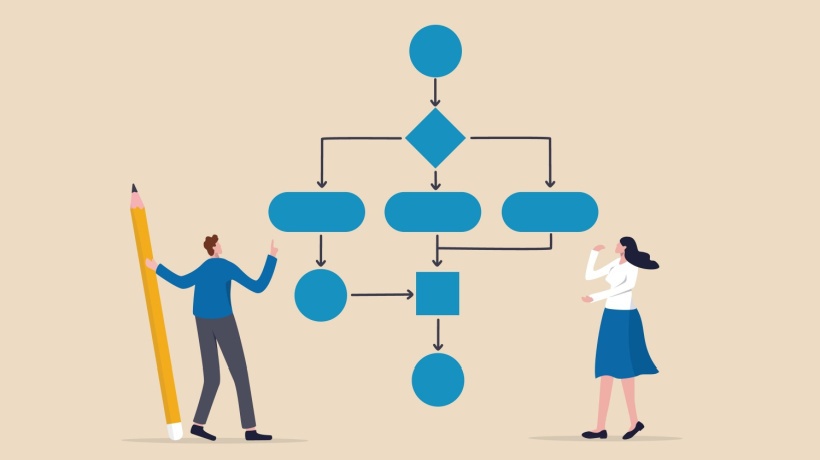Communication Skills And An OJT Template
According to the Institute of Education Sciences, competency-based education refers to a personalized learning approach, where students learn in a flexible and engaging learning environment, and progress to higher levels of competencies upon evidence of their competency in the previous level. Communication skills is a "soft" skill and often regarded as difficult to map in terms of competency, as opposed to technical skills. I would like to share how communication skills could be mapped using the cognitive and affective dimensions of Bloom’s taxonomy, and how the mapping could be used for grading and training purposes.
Mapping Soft Skills Using Bloom's Taxonomy
The cognitive process dimension in Bloom’s taxonomy (Anderson and Krathwohl, 2001) has often been used to write learning or training objectives. The taxonomy reflects competencies in ascending levels of complexity and specificity, with the prior level a prerequisite for the successful mastery of upper levels in the taxonomy. The levels are remember (level 1), understand (level 2), apply (level 3), analyze (level 4), evaluate (level 5), and create (level 6).
Similarly, the affective process dimension in Bloom’s taxonomy reflects ascending levels of awareness and growth. The levels are receiving/paying attention (level 1), responding/participating in learning (level 2), valuing/attaching a value to what is being learned (level 3), organizing/comparing and making connections to prior knowledge (level 4) and characterizing/making meaning to their life (level 5).
Mapping competencies in communication skills could be written in a similar manner as on-the-job (OJT) blueprints in the workplace. Mapping these soft skills competencies could make the level of cognitive and affective attainment of these competencies more visible and transparent to students and employers alike, and provide for more personalized training in the context of upskilling and reskilling workers.
An example is shown in Table 1 on the main task of "connecting ideas logically" in the context of writing technical design reports. The two main task elements in writing technical design reports are to connect ideas between paragraphs and within a paragraph.

Table 1: Mapping of the Connecting ideas logically task using an OJT blueprint template
If we map the competencies according to Bloom’s taxonomy, we will start with a statement of the knowledge, abilities, and attitude needed. Attitude is placed in the same column as knowledge and abilities because these are underlying traits that determine a student’s posture in learning for all the six levels of the cognitive dimension.
In the affective dimension, students need to pay attention (level 1) to what is taught in the knowledge section and participate (level 2) in performing activities in the writing process (like conducting internet searches). These behaviors were not listed in Table 1 as they are basic requirements of a student. The students would also need to persist (level 3) in working towards submitting the assignment for a grade. Furthermore, in persisting to perform the task, the students would intuitively compare what they are learning to their prior knowledge. In organizing (level 4) their "new" knowledge by accommodating or assimilating it to their prior knowledge, they need to be critical and objective. This will help them to develop metacognitive skills where they can make meaning (level 5) of what they are learning to the writing of similar reports and to their work and life whenever evidence-based arguments are required.
In the cognitive dimension, students need to remember and understand (levels 1 and 2) the structure of technical reports, PEEL (point, evidence, elaboration, link), unity, coherence, cohesion, and synthesis. In addition, the ability to conduct internet searches using CRAAP (currency, relevance, accuracy, authority, and purpose), and proper citation skills are necessary to avoid plagiarism when writing technical design reports.
Moving up to Bloom’s taxonomy level 3, students need to know how to apply the structure of technical design reports in terms of content and format. This means that students need to know what the main sections in a technical design report are, and adopt proper formatting in terms of headings and subheadings.
In level 4, students should be able to analyze or filter for potential solutions during the screening stage using preset criteria. In level 5, students will need to evaluate these potential solutions based on their strengths and limitations in a critical manner. In level 6, students will then need to convince readers using objective evidence of the robustness of the decision made for the proposed solution and the effectiveness of the proposed solution in a pilot study, if any.
Mapping Soft Skills And Grading
If we work on the principle that the mastery of a prior competency is a prerequisite for its effective application in later competencies then we could translate this to grading. For example, a technical design report reflecting an average grade, like a B grade, could mean that a student was able to apply (level 3) the content and format of a report but has barely mastered the competency to analyze (level 4) potential solutions during the screening stage. Signs in a student’s report could look like these: very few potential solutions being analyzed or the lack of evidence to support the choice of a particular solution in relation to the design objective. As the student has not mastered level 4, it is challenging for the student to showcase levels 5 and 6 competencies in the writing of the report.
Similarly, in training, the mapping of competencies could help students know where they stand in a more holistic manner. In the Table 1 example, a student who gets a B grade would know that in terms of "connecting ideas", they have mastered only level 3 and they need to work harder to reach levels 4-6 to get a better grade. For instructors, it would also be easier to provide targeted instruction at the level appropriate to the competency gaps shown, especially in the context of reinforcing learning in a personalized manner. Students would also feel relieved that they can skip levels 1-3 competencies in similar modules and, with the time and effort saved, they will be more motivated to reinforce their mastery of levels 4-6 competencies.
References:
- Anderson, L. W., and D. R. Krathwohl. 2001. A taxonomy for learning, teaching, and assessing: A Revision of Bloom’s Taxonomy of Educational Objectives. New York: Longman.
- Institute of Education Sciences. (n.d.). Measuring Success through Competency-based Learning.
Image Credits:
- The table within the body of the article was created/supplied by the author.









